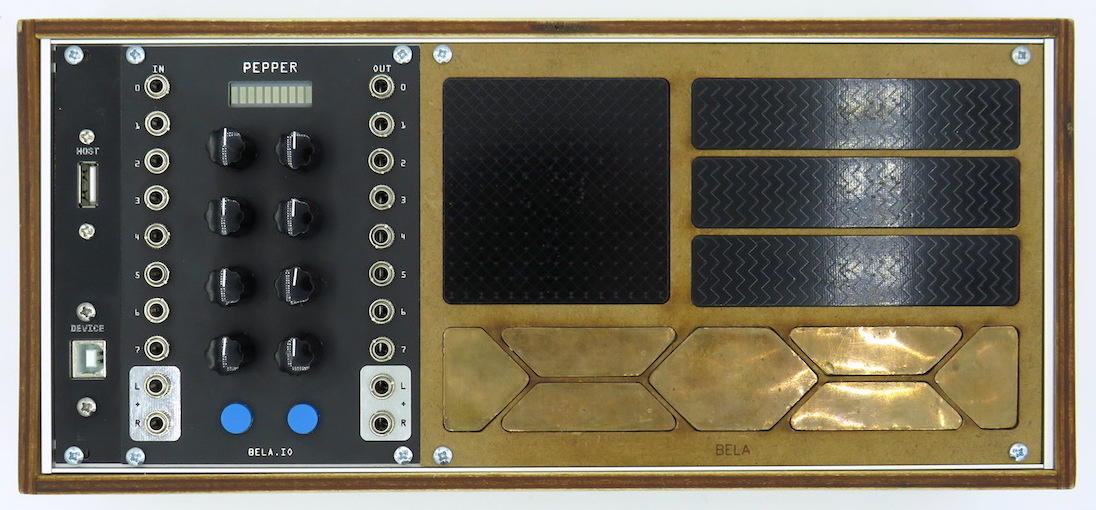Euro-Trill
Touch Sensing for Modular Synthesisers
Trill Touch Sensors are the perfect tools for building synthesisers and electronic musical instruments. In this post we’ll have a close look at a synth module we’ve created with Trill that works alongside our DIY Eurorack module Pepper.
Euro-Trill in Action
Working with the Trill Sensors
At the core of this synthesiser are the Trill Touch Sensors which are the latest maker tool from the team at Bela, and are live on Kickstarter until the 18th of October 2019. There are three types of Trill sensor used in this module: Trill Bar, Trill Square and Trill Craft.
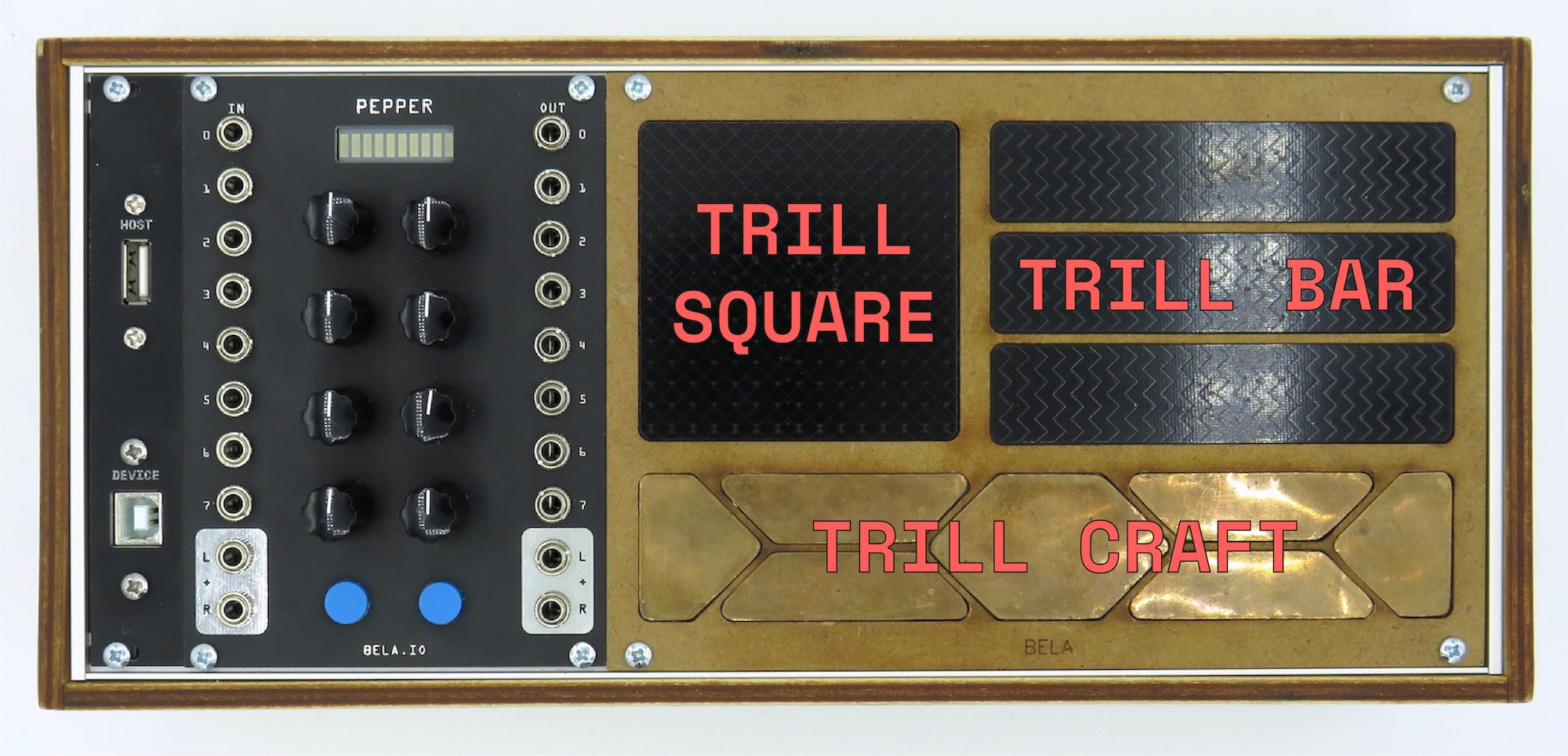
Producing Control Voltage from the Trill Sensors
The Trill sensors alone cannot produce a control voltage and need to be connected to a microcontroller or embedded computer to translate the readings from the sensor into the required voltage ranges. To do this you can use a low cost microcontroller like Arduino, Teensy or many other popular maker boards so long as they have an I2C port available (see the Trill Arduino examples). In this case we’ve used a more sophisticated embedded computer (Bela and BeagleBone Black) that can perform complex synthesis of sound alongside producing control voltages. Bela is particularly well suited for creating synthesisers and you can see previous synth projects made with the board here.
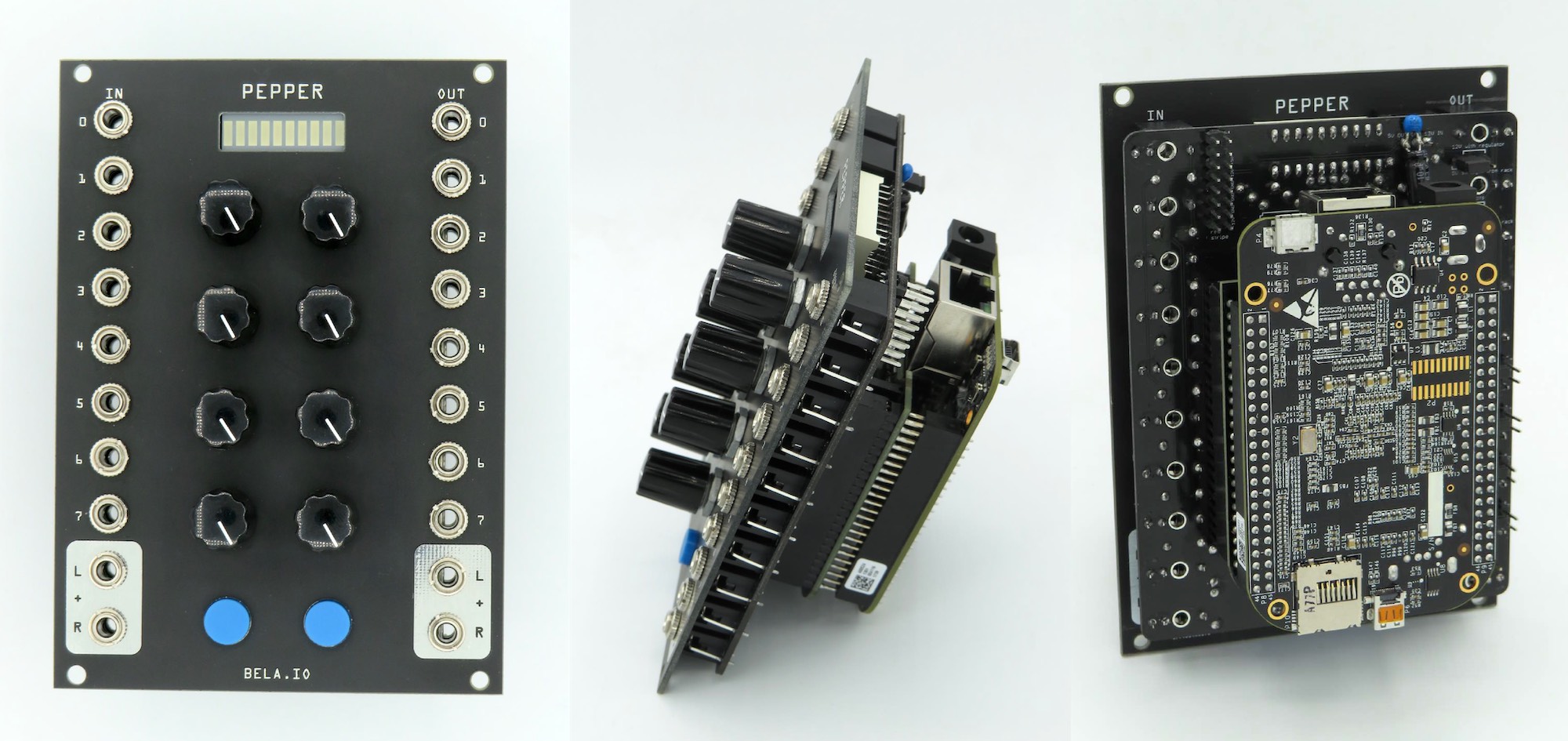
The Pepper Eurorack Module.
In Euro-Trill we connected the Trill sensors to our Pepper module. Pepper is a DIY Eurorack module for integrating Bela with modular synthesisers. It’s a programmable module that can be used for manipulating and generating both control voltage and audio signals. Pepper offers 8 CV inputs (attenuated by the pots), 8 CV outputs, stereo audio input, stereo audio output, two buttons and a 10-bar LED display. All of this can be programmed using a variety of different languages (c/c++, Pure Data, SuperCollider, Csound, FAUST) from within the Bela environment.
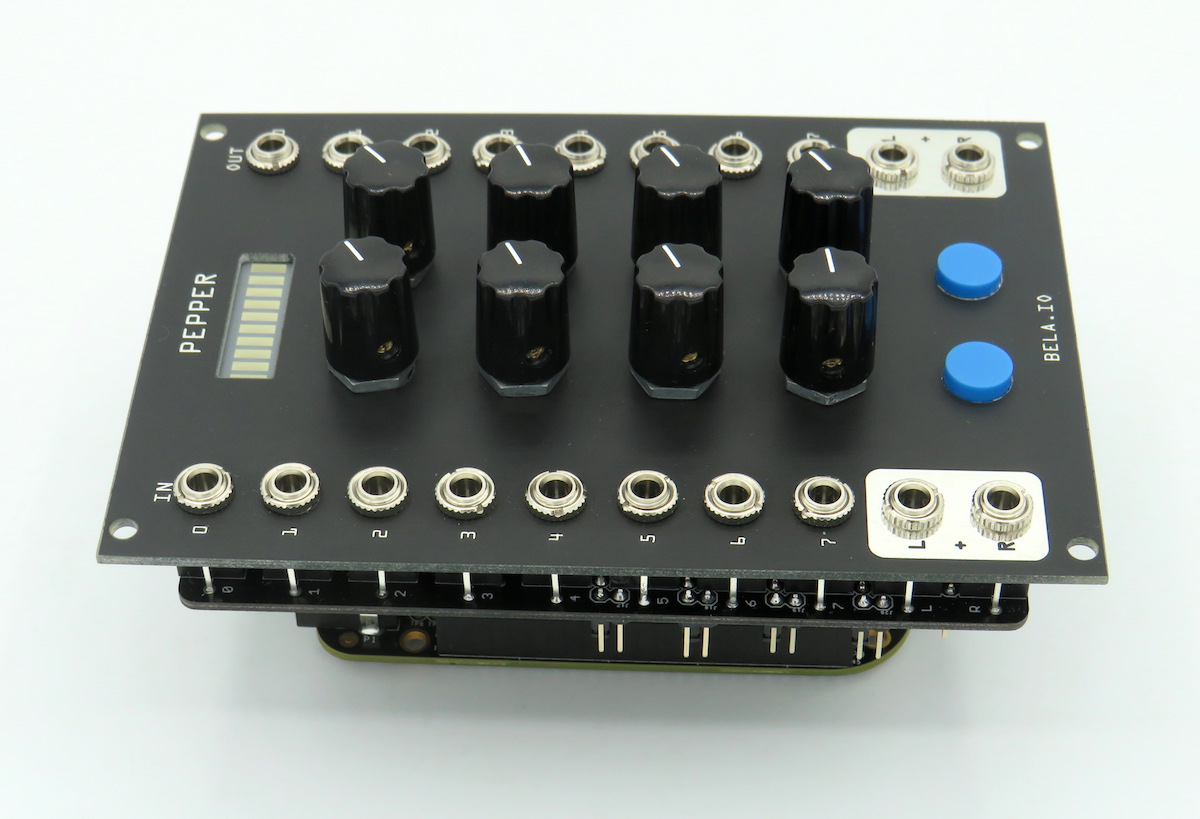
To connect the Trill sensors to Pepper we use I2C, a digital communication protocol that requires only two connections in addition to power and ground: SCL (clock) and SDA (data). On the Pepper module these four pins are broken out on the back of the PCB for exactly these kind of situations.
Using Multiple Trill Sensors at once
To use multiple Trill sensors at the same time you just need to make sure that each sensor has a unique I2C address. The I2C address of each sensor can be changed via the solder bridges on the back of each sensor.
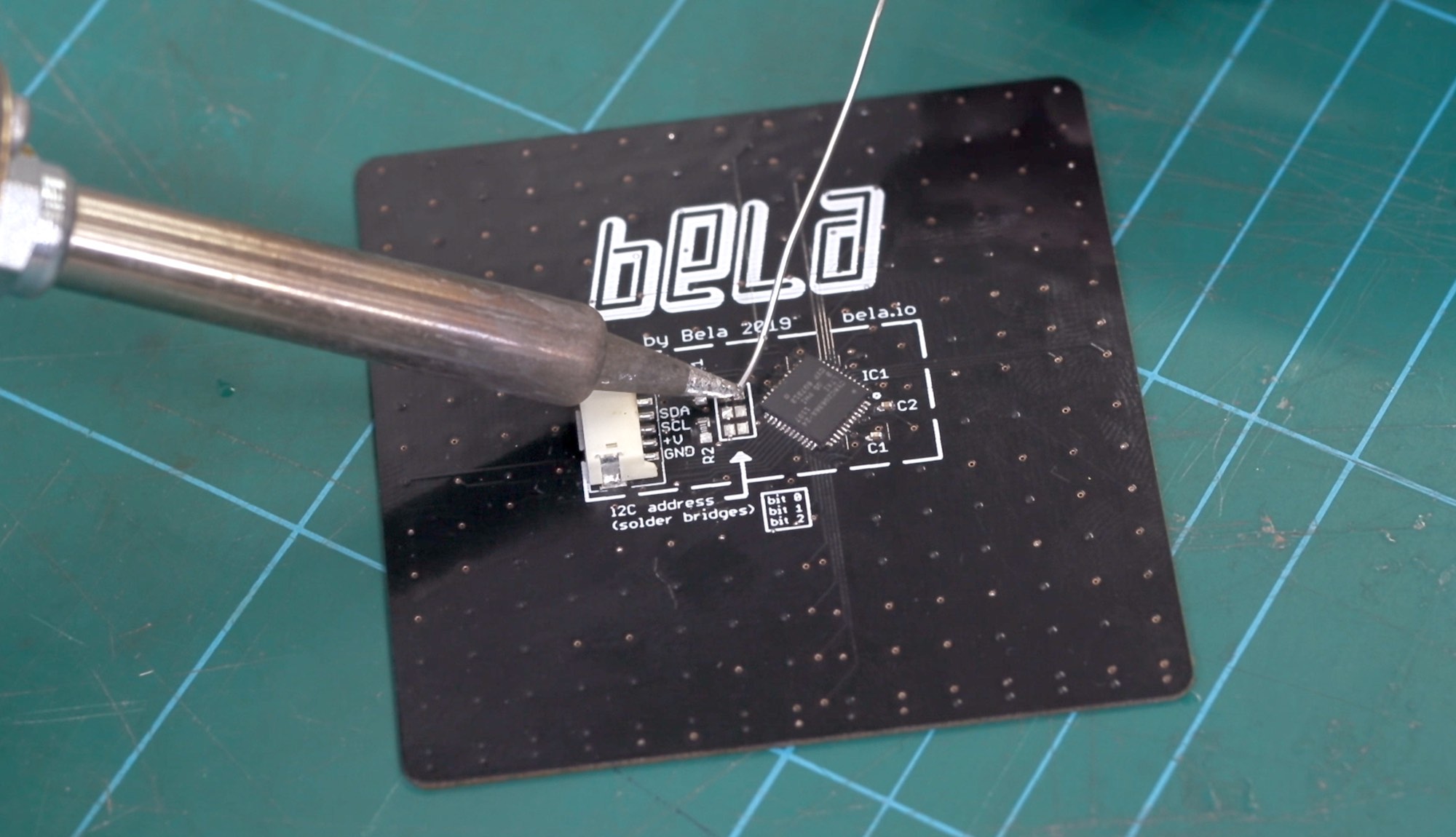
Changing the I2C address of the Trill sensor via the solder bridges on the back.
Once each of the sensors has an individual address they can be connected together by simply daisy-chaining the SDA and SCL cables together. To make the module more durable and road-friendly we created a simple break-out using protoboard that connects all of the wires together.
Mapping Touch Sensing to Sound Synthesis
The code for this instrument was written in c++ and has two main components: a pattern generator that triggers samples and generates cv triggers, and a seven voice subtractive synthesiser with two square wave oscillators per voice that can be detuned from each other and pass through a resonant low pass filter.
Trill Bar for Pattern Control
Trill Bar is a multitouch slider that can sense up to five touch points. Each of the three Trill Bar sensors in the synthesiser have a pre-defined 16-step pattern assigned to them. Touches on the sensors control the start and end point of that sequence which are played back in synchrony with a master clock that is received through Pepper’s first cv input.
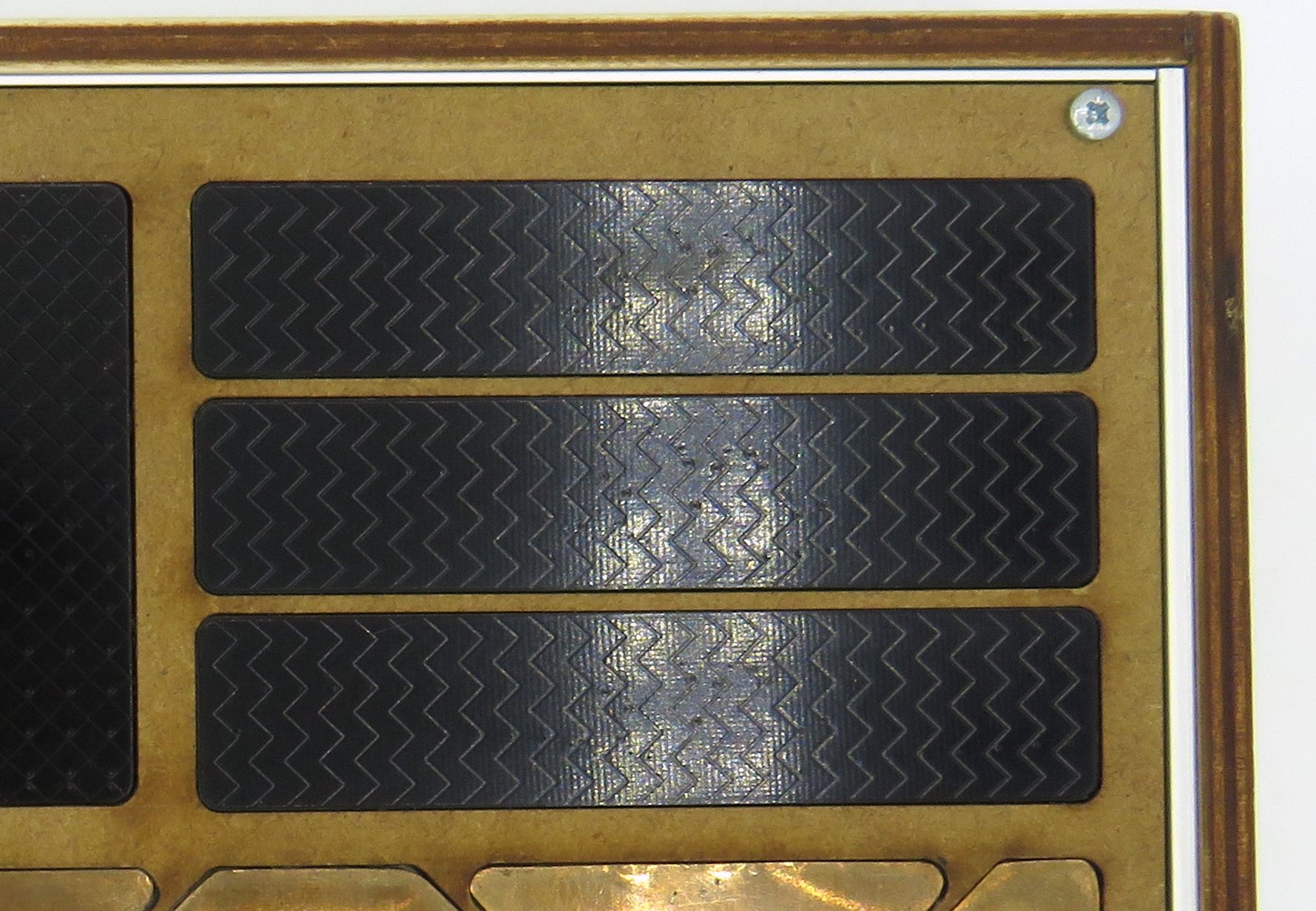
Trill Bar: multitouch slider for pattern control.
The patterns are used to trigger samples that are played back from the first channel of audio output. Triggers are also generated from the CV outputs of Pepper. The LEDs on Pepper give feedback of the position in the pattern and flash in time with the triggers.
Trill Craft for Brass Keyboard
Trill Craft is a 30-channel capacitive sensing breakout board that lets you make your own touch interfaces out of anything conductive. In this case it is used to turn seven pieces of brass into a custom keyboard. This only uses 7 of the 30 channels available on Trill Craft so much more sophisticated interfaces are possible.

Trill Craft: turn anything conductive into a sensor with 30 individual channels.
The synthesiser is based on two square wave oscillators that can be detuned one from the other. There are seven independent voices that are each controlled by touches on the brass keyboard. The attack and decay of the envelope that is applied to the oscillator is controlled by two of the potentiometers on Pepper as is the overall detune amount. The audio from the synthesiser comes out of the second audio output on Pepper.
Trill Square for Modulation of Synthesis Parameters
Trill Square is a touch pad that senses two axes of movement that we use to control the detuning of the two oscillators of the synthesiser on one axis, and the cutoff and Q of the filter on the other axis.
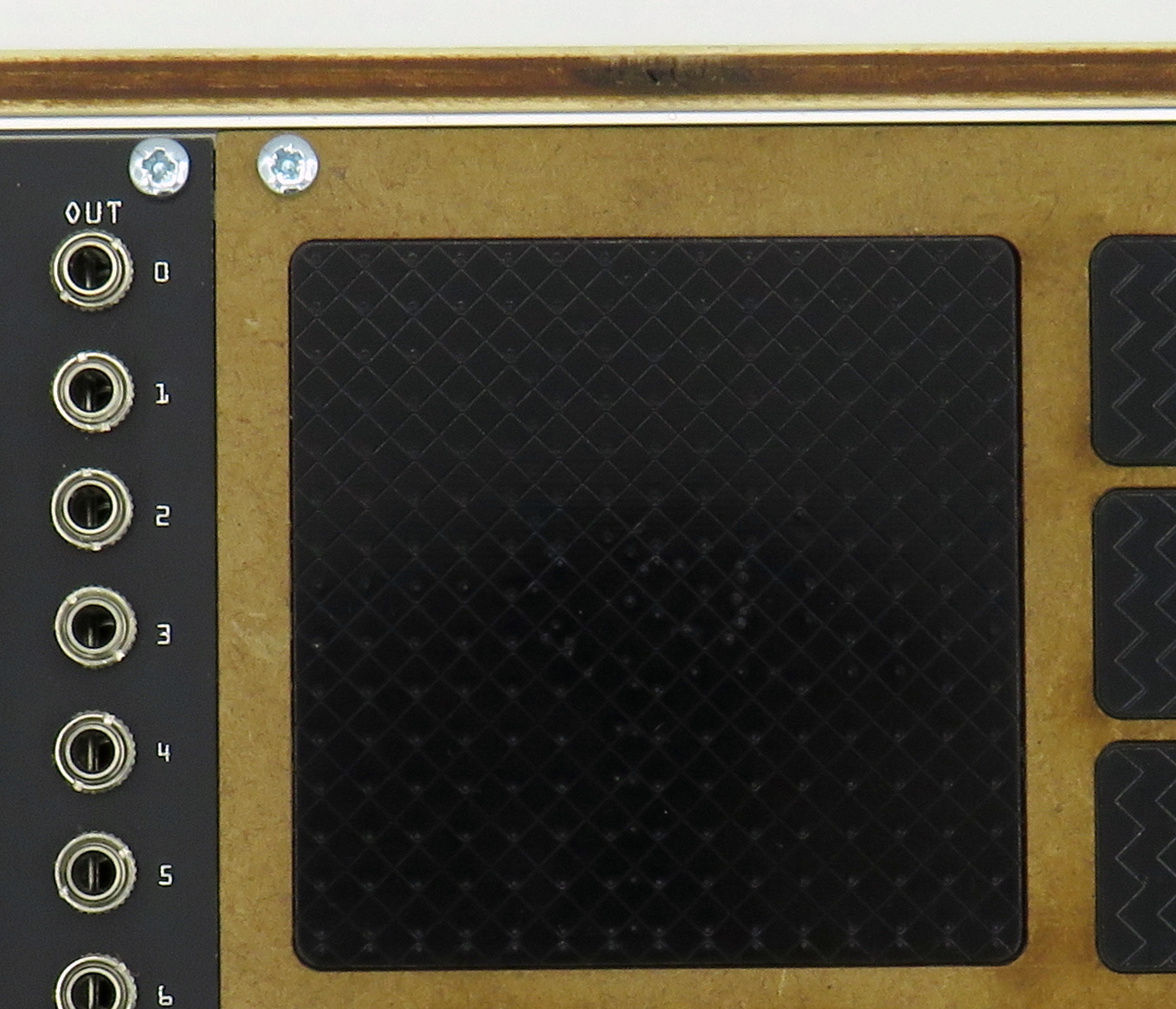
Trill Square: x-y sensing for controlling synthesis parameters.
Euro-Trill serves to demonstrate some of the possibilities that the Trill touch sensors open up for the development of Eurorack modules, standalone electronic instruments, and sound-producing machines in general. They provide a really intuitive and responsive form of control for digital synthesisers and offer plenty of opportunities for experimenting with free-form interfaces and control surfaces.
Visit Trill on Kickstarter
The Trill touch sensors are now live on Kickstarter! This new family of sensors from Bela bring precise and easy-to-use touch interaction to your digital projects.
The campaign runs until 5pm 18th October so don’t miss your chance to get your hands on this new family of touch sensors for makers. See you on Kickstarter and stay tuned for updates!

